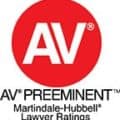If the scaffold collapses, and someone is injured as a result, it is likely that someone will have to pay. Who must pay is a question of fact that must be evaluated on a case-by-case basis.
On January 4th, a set of construction scaffolding collapsed in the night, damaging four vehicles, the Chicago Tribune reports. The scaffold was erected adjacent to an apartment building near the corner of Lakewood and Schubert in Chicago’s Lincoln Park neighborhood. Three parked vehicles were damaged when the scaffold fell, while a fourth car was damaged as it was being driven down the street. The Chicago Police Department reports that no one was injured in the collapse.
Construction and window-washing scaffolds are common sights in Chicago. Its well-earned reputation as the birthplace of the skyscraper, as well as a Mecca of modern architecture, has festooned the cityscape with signs of wear, weather, and financial misfortune. Buildings built at the turn of the century often require maintenance on their facades. Many ambitious real estate projects taken up before 2008 were abandoned in the subsequent economic downturn. As a result, construction companies and building superintendents often erect scaffolds to accommodate construction workers to repair, replace, and otherwise maintain the buildings. These scaffolds are erected at the beginning of the project, and remain until the project is completed. This could mean a week, or it could mean years. If the scaffold collapses, and someone is injured as a result, it is likely that someone will have to pay. Who must pay is a question of fact that must be evaluated on a case-by-case basis.
Scaffolding Accidents caused by Building’s Owner/Manager, or their employees
Often, a building’s owner or, in the case of an owner being a larger corporation, a building’s management company will have its own staff and equipment on hand to conduct maintenance and construction projects. If a building’s own employees construct a scaffold that collapses and causes injury, the building’s owner or management company will likely be liable for the injury. This means that the company would have to compensate the injured party for damage to property (like a car, as in the above case), medical and treatment bills, and lost income if the injured party cannot work.
Construction Company causing Scaffolding Accidents
If a building’s management hires a construction company to construct the scaffold and perform the project, that construction company is liable for anyone injured by a negligently constructed or maintained scaffold. More often than not, the building’s management will not be held liable for the negligent acts of the construction company. However, depending on the nature of the relationship between the construction company and the building, the construction company’s conduct may be imputed to the building’s management. The doctrine involved is called vicarious liability, and it provides that the actions of an agent can be considered the actions of the principal. In this case, the principal (the building’s management) may be held liable for the actions of the agent (the construction company). While the construction company is often considered a subcontractor and not an agent, it is possible that the relationship may be one of agent/principal.











